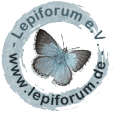

 +1Kontinente:AS
+1Kontinente:AS3. Weitere Informationen
3.1. Andere Kombinationen
- Anacampsis telaviviella Amsel, 1935 [Originalkombination]
- Schützeia telaviviella (Amsel, 1935) [so bei Amsel (1936)]
- Schuetzeia telaviviella (Amsel, 1935)
3.2. Taxonomie und Faunistik
Amsel (1935: 299) beschrieb seine neue Art als "Anacampsis telaviviella" von "Tel-Aviv (Düne)". Bidzilya et al. (2019: 17) kannten auch nur das Typenmaterial und wenige weitere 1932 in Israel geesammelte Exemplare: "Syntypes of Anacampsis telaviviella 1 ♀, “Tel-Aviv (Düne), 19.v.1930 H. G. Amsel” | ”GU. 713” | “Typus. leg. H. Amsel, Anacampsis telaviviella”, 1 ♂ (abdomen missing), “Tel-Aviv, Lichtf.[ang], Düne, 15.v.30 (Pal), H. Amsel” | “Paratypus. leg. H. Amsel, Anacampsis telaviviella”; 3 ♂, Tel-Aviv (Düne), 25.v.1932 (Einsler) (gen. slide 29/18, O. Bidzilya); 1 ♂, same place but 21.x.1932 (all SMNK)." Sie sahen Probleme mit der Artabgrenzung gegenüber Aproaerema anthyllidella und ebenso gegenüber der später beschriebenen - und daher noch fraglicheren - Aproaerema languidella (Amsel, 1936). Sie merkten daher kritisch an: "Remarks. Anacampsis telaviviella was described from an unstated number of specimens collected 19.v.1930 in Tel-Aviv (“Tel-Aviv, Düne”). A holotype was not selected in the original description, and two specimens in SMNK should be considered as syntypes. There are three additional males in SMNK collected sympatrically with syntypes of A. languidella 25.v.1932, of which one (Fig. 17) looks similar to the one of syntype (Fig. 18) and also bears a type label, but it does not belong to the type series. The genitalia slide of the female syntype is uninformative, because the antrum is not visible and both ductus bursae and corpus bursae are missing. The male genitalia of a specimen externally similar to A. telaviviella (Fig. 19), but collected 25.v.1932, look indistinguishable from those of A. anthyllidella and A. languidella. The status of this and the previous species remains unclear and can hardly be clarified without studying morphology and DNA of additional material."
Amsel (1936: 367) betont bei der Beschreibung der "Schützeia languidella, dass bisher erst 2 Männchen von Schützeia telaviviella bekannt waren (und 8 weitere jetzt hinzukamen: "Von Sch. telaviviella, die bisher erst in 2 männlichen Stücken bekannt war, liegen mir noch weitere 8 Exemplare vor, die am 17. 9. bzw. 25. lU. auf der Düne bei Tel-Aviv erbeutet wurden, darunter auch ♀♀, die mit den ♂♂ vollkommen übereinstimmen. Die Art fliegt also sowohl im Frühjahr wie im Herbst."). Außer den beiden von Bidzilya et al. (2019: 17) im Museum gefundenen Typusexemplaren gab es also ganz offensichtlich keine weiteren. Wenn eines der Exemplare als "Paratypus" bezeichnet wurde, das andere nur als "Typus", dann ist klar, dass mit letzterem "Holotypus" gemeint war - eine Vorgehensweise, die H.G. Amsel auch bei anderen Arten anwendete. Die Exemplare müssen also nicht als Syntypen aufgefasst werden.
(Autor: Erwin Rennwald)
3.3. Literatur
- Erstbeschreibung: Amsel, H. G. (1935): Neue palästinensische Lepidopteren. — Mitteilungen aus dem Zoologischen Museum in Berlin 20 (2): 271-319, pl. 9-18.
- Amsel, H.G. (1936): Eine neue Schützeia-Art aus Palästina (Lepidoptera: Gelechiidae). — Veröffentlichungen aus dem Deutschen Kolonial- und Übersee-Museum in Bremen, 1 (3): 366–368. [PDF auf zobodat.at]
- Bidzilya, O., Karsholt, O., Kravchenko, V. & J. Šumpich (2019): An annotated checklist of Gelechiidae (Lepidoptera) of Israel with description of two new species. — Zootaxa, 4677 (1): 1-68. [zum PDF-Download auf researchgate.net]



